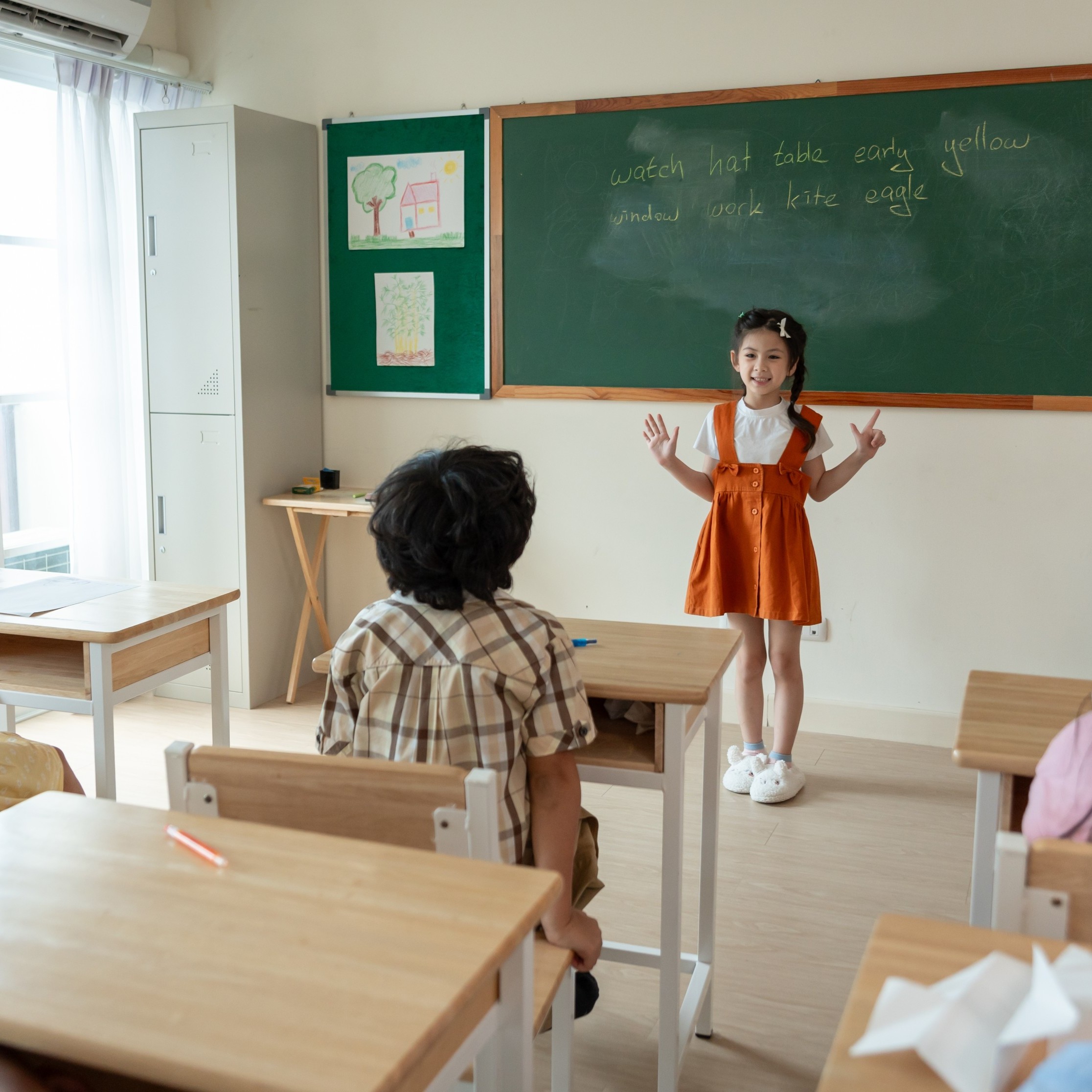
Practical Strategies to Prepare Your Child for a New School
August 14, 2025
5 min read
Starting at a new school can be an exciting yet stressful experience for children. The unfamiliar environment, new routines, and pressure to make friends can cause anxiety, especially for children who struggle with transitions. As a parent, you play a vital role in helping your child feel more confident and prepared for this significant change. This article outlines practical, research-backed strategies to help you support your child as they transition to a new school.
Understanding the Challenges
Transitions to a new school often involve a mix of emotions, including excitement, nervousness, and uncertainty. Research by Jindal-Snape et al. (2016), published in Cambridge Journal of Education, highlights that transitions can affect a child’s emotional well-being, academic performance, and social relationships. Children who feel unprepared or unsupported during this period may experience anxiety, loneliness, or difficulty adjusting.
The good news is that proactive preparation and parental support can make a significant difference in how smoothly your child adapts to their new school environment.
1. Familiarize Your Child with the New School Environment
One of the most effective ways to ease your child’s anxiety is by familiarizing them with the new school before their first day. Arrange a visit to the school so your child can see their classroom, meet their teacher, and explore the playground or cafeteria.
A study by West et al. (2010) in Educational Research found that visits to the school before the start of the academic year help children feel more comfortable and confident. When children know what to expect, their sense of control increases, reducing feelings of anxiety.
If an in-person visit isn’t possible, look for virtual tours or photos of the school’s facilities on the school’s website.
2. Re-establish a Routine Before School Starts
Children thrive on routine, and changes in schedule can be disruptive. Before the school year begins, start aligning your child’s daily routine with the school schedule. This includes setting regular wake-up and bedtime hours, practicing the school morning routine, and eating meals at times similar to the school day.
A study published in Sleep Medicine (Wolfson & Carskadon, 2003) emphasizes the importance of consistent sleep schedules for improving children’s attention, mood, and academic performance. Adjusting routines a few weeks before the start of school can help your child feel more prepared and energized for their new environment.
3. Practice the Journey to School
If the new school requires a different commute, practice the journey with your child a few times before their first day. Whether they will walk, take the bus, or ride in the car, rehearsing the route can help reduce anxiety about getting to school on time.
For older children navigating public transportation, practicing the journey together can build their confidence and ensure they feel safe and capable.
4. Encourage Open Communication
Creating a safe space for your child to talk about their feelings is crucial during this transition. Encourage them to share their fears, hopes, and expectations about the new school.
Research published in Child Development (Laursen & Collins, 2009) highlights that parent-child communication fosters emotional resilience and helps children cope with stress. Use active listening techniques, such as reflecting on their feelings (“It sounds like you’re feeling nervous about making new friends”), to validate their emotions and provide reassurance.
5. Build Social Confidence
Making new friends can be one of the most intimidating aspects of starting at a new school. To help your child build social confidence:
- Role-play social situations: Practice common scenarios like introducing themselves, joining a group activity, or asking someone to sit with them at lunch.
- Encourage extracurricular activities: Joining a club, sports team, or art class can help your child meet peers with similar interests. According to Fredricks and Eccles (2006), participating in extracurricular activities improves social skills and peer relationships.
- Arrange playdates or meet-ups: If possible, connect with other families at the new school. Meeting a classmate before school starts can ease the transition.
6. Talk About Change Positively
Your attitude toward the change will influence how your child perceives it. Even if you feel anxious about the transition, focus on the positive aspects of the new school. Highlight opportunities for growth, new friendships, and exciting activities.
Children often mirror their parents’ emotions, as noted by research in Developmental Psychology (Bandura, 1977). When you approach the change with optimism, your child is more likely to feel confident and excited.
7. Create a Visual Schedule or Calendar
Using a visual schedule to track key dates, such as orientation sessions, the first day of school, or special events, can help your child feel more organized and prepared. Add reminders about what they need to bring to school each day (e.g., gym clothes, art supplies).
Research in Journal of Autism and Developmental Disorders by Bryan and Gast (2000) suggests that visual supports reduce anxiety and improve understanding of expectations in children, especially during transitions.
8. Prepare for Emotional Ups and Downs
It’s normal for children to experience a mix of emotions during the first weeks at a new school. Be patient and supportive, and remind them that it’s okay to feel nervous or overwhelmed.
Encourage them to focus on small successes, such as meeting one new friend or learning their way around the school. Celebrating these achievements can boost their confidence and motivation to keep trying.
9. Maintain Communication with the School
Stay in touch with teachers, school counselors, and administrators to monitor your child’s progress during the transition. Share any concerns or observations about your child’s adjustment and ask for feedback on how they’re doing in the classroom.
Research by Crosnoe et al. (2010) in American Educational Research Journal highlights that parent-school collaboration improves students’ academic and social outcomes. Building a partnership with the school ensures that your child receives the support they need.
Conclusion
Starting at a new school is a significant milestone for any child, and with the right preparation, it can be an exciting opportunity for growth and learning. By familiarizing your child with the new environment, establishing routines, fostering open communication, and supporting their social confidence, you can help them navigate this transition with greater ease and resilience.
Remember, every child adjusts at their own pace. Be patient, stay positive, and celebrate their progress along the way. With your guidance and encouragement, your child can thrive in their new school environment.
References
- Bandura, A. (1977). “Social Learning Theory.” Developmental Psychology.
- Bryan, L. C., & Gast, D. L. (2000). “Teaching on-task and on-schedule behaviors to high-functioning children with autism via picture activity schedules.” Journal of Autism and Developmental Disorders.
- Crosnoe, R., et al. (2010). “Family-school connections and the transitions of low-income youths and English language learners from middle school to high school.” American Educational Research Journal.
- Fredricks, J. A., & Eccles, J. S. (2006). “Extracurricular involvement and adolescent adjustment: Impact of duration, number of activities, and breadth of participation.” Developmental Psychology.
- Jindal-Snape, D., et al. (2016). “Primary-secondary transitions: A systematic literature review.” Cambridge Journal of Education.
- Laursen, B., & Collins, W. A. (2009). “Parent-child relationships during adolescence.” Child Development.
- West, P., Sweeting, H., & Young, R. (2010). “Transition matters: Pupils’ experiences of the primary-secondary school transition in the West of Scotland and consequences for well-being and attainment.” Educational Research.
- Wolfson, A. R., & Carskadon, M. A. (2003). “Understanding adolescents’ sleep patterns and school performance: A critical appraisal.” Sleep Medicine.





